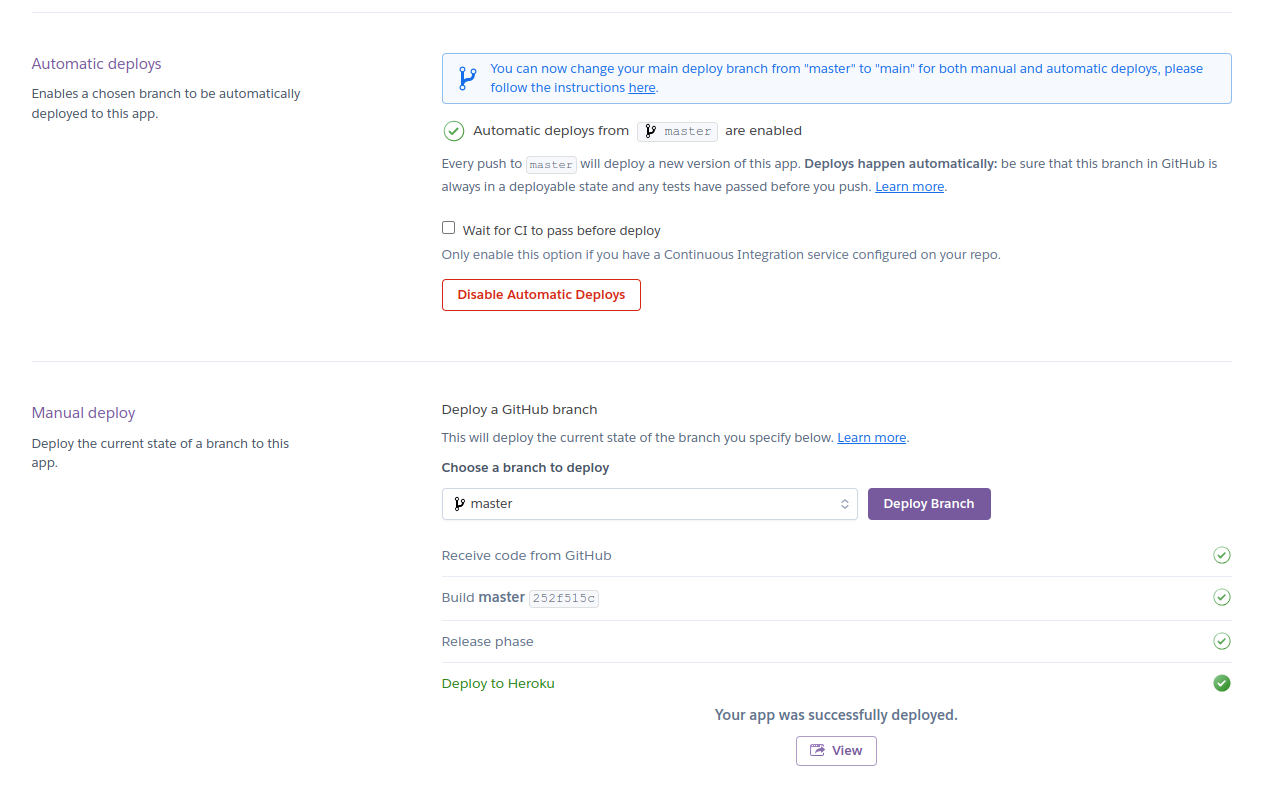Deploy Manifest on Heroku
Heroku is a popular cloud app platform provider that supports many languages and provides a nice interface to deploy apps.
Create a "start" script for production
The npm run manifest script should only be used for development as it watches file changes.
Go back to your codebase and open the package.json file and add a new start script on the scripts list with the value node node_modules/manifest/dist/manifest/src/main.js as following:
"scripts": {
"start": "node node_modules/manifest/dist/manifest/src/main.js"
[...]
}
Link the source provider
Sign in to your Heroku account or create a new one.
You can click on the "New" button and then "Create a new app" to get started. Choose the app name and the region that is closest to your users and click on "Create app".
In our example we are deploying a Manifest backend hosted in GitHub but you can get it from other sources too like Heroku Git or Container Registry.
Select "GitHub" and then connect the repository of your manifest backend. Click on "Automatic deploys" if you want to enable push-to-deploy on the main branch. Make sure that you are on the correct branch that corresponds to your production version (usually main or master).

Click on "Deploy branch" to build your app.
A message will indicate that your app is ready, and a link to view it will appear. However, we still have some configuration to make it work.
Add environment variables
Go to the "Settings" tab and click on "Reveal Config Vars" in the "Config Vars" section. Then add the 2 environment variables: TOKEN_SECRET_KEY (which you can generate at https://jwtsecret.com/generate) and NODE_ENV=production.
🎉 That's it! Now you can click on "Open app" to see it!